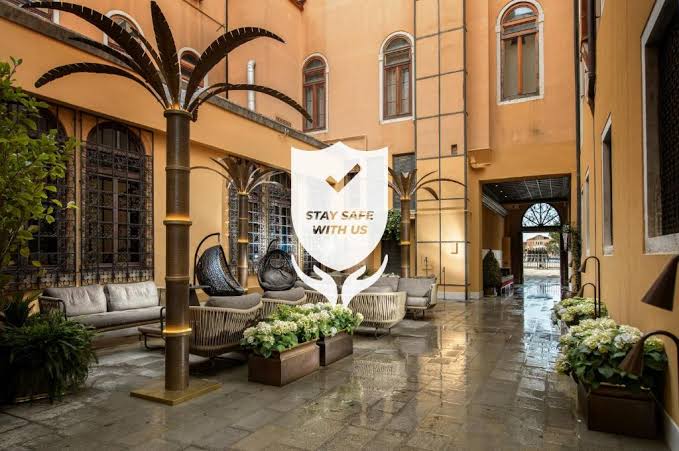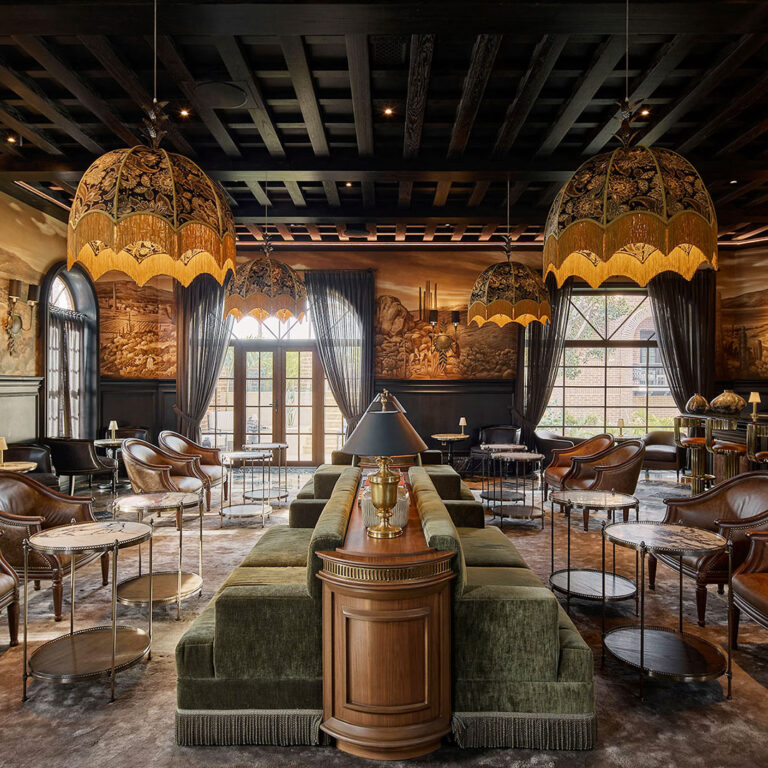Palazzo Veneziano – Venice Collection: A Tapestry of Time and Modern Elegance
Palazzo Veneziano – Venice Collection: A Tapestry of Time and Modern Elegance
It begins the way all stories in Venice should—with the sound of water lapping against centuries-old stone and the shimmer of golden light filtering through narrow canals. There, on the calm southern banks of the Giudecca Canal, the Palazzo Veneziano rises like a whispered memory of the Renaissance, reimagined for the discerning eye of the 21st century.
This is not merely a hotel, nor a museum, nor a design studio. It is all three—and something more elusive, too: a curated experience that honors the lavish aesthetic of Venice’s past while sculpting a bold, contemporary vision. The Venice Collection, unveiled under the guiding vision of the enigmatic design house Studio Aurelia, is a tribute to the city’s layered identity. Ornate yet minimal, classical yet provocative, the Palazzo Veneziano captures a mood, a city, and a moment in design history that may never come again.
Origins in Restoration
The Palazzo itself dates back to the late 16th century. For decades, it was left dormant, a hushed relic too beautiful to destroy and too fragile to use. Locals told stories of the painted ceilings glimpsed through broken windows, of forgotten frescoes and serpentine chandeliers covered in dust. It was a ghost of what had been Venice’s artistic soul.
Enter Studio Aurelia, a design collective known for its provocative restorations of historical spaces, who saw potential where others saw ruin. Over five painstaking years, artisans, conservators, and avant-garde architects breathed life back into the bones of the building. What emerged was not a replica of the past, but a new palazzo—a contemporary palimpsest of Venetian grandeur.
Every tile laid, every sconce chosen, every tapestry woven became part of what would be called the Venice Collection: a design anthology showcased exclusively within Palazzo Veneziano.
The Venice Collection: Objects of Memory
The Venice Collection itself defies categorization. Is it furniture? Art? Architecture? It is all of these—and yet it exists only in one place. Each piece was created site-specifically, embedded within the palazzo’s rooms and salons. Guests can sleep beneath custom Murano glass lighting that mimics the Adriatic tides or recline on velvet divans dyed with pigments sourced from Venetian salt flats.
Highlights of the collection include:
The Salizada Chaise: Designed by master artisan Paolo Varin, it’s made from reclaimed gondola oak and embroidered with 18th-century patterns reinterpreted in aquamarine silk. Each arm curves like the prow of a boat, and its cushions give the sensation of being cradled by water.
Mirror of Dogaressas: A floor-length mirror etched with the silhouettes of historical Venetian noblewomen. When light hits the surface at dusk, their outlines shimmer in and out of view, creating the impression of ghosts walking past.
The Gold Fog Chandelier: Inspired by Venice’s legendary morning mists, it suspends hundreds of gilded glass droplets at varying heights, mimicking dew evaporating under the city’s sun. Guests dining beneath it in the Sala delle Luci describe feeling like they are floating in cloudlight.
Each object is infused with historical references, but none are literal. Instead, the collection translates memory into material—turning myth into form.
The Artists Behind the Vision
The Venice Collection is the result of collaboration among 17 designers, including international luminaries and local legends.
Chief among them is Chiara Novelli, the Milan-born design provocateur whose minimalist philosophy clashed spectacularly with Venice’s baroque tendencies. “I wanted to find restraint inside excess,” she says, seated inside the Palazzo’s Winter Garden, beneath a canopy of creeping jasmine and brushed copper. “Venice has always been about illusion—water masquerading as stone, palaces built on silt. So why not play with the idea of permanence itself?”
Novelli oversaw a radical reinterpretation of interior space. Bedrooms open into open-air atriums. Walls shift. Light becomes an architectural material. Her contribution, “The Folding Lagoon”, is a room of panels that pivot to reveal secret compartments, mirrors, and light passages. Guests are encouraged to interact with the space, like characters in a masquerade.
Another contributor, Alvise Romano, a fifth-generation glassmaker from Murano, brought an emotional connection to tradition. His “Nebbia Series” of blown-glass vases captures the moment when fog curls over rooftops—a delicate balance between opacity and transparency. “I don’t copy old methods,” he says. “I answer them.”
Living Within the Art
Palazzo Veneziano offers only 28 suites—each a singular environment designed around one of the Venice Collection’s key pieces. The “Canaletto Suite” evokes the painter’s dreamlike perspectives, with shifting floor heights and false doorways that mirror his playful geometry. In contrast, the “Lido Noir” is a moody interpretation of Venetian cinema, draped in black velvet and outfitted with mirrored panels that distort reflection and space.
No two rooms are alike. “This isn’t a hotel,” explains concierge director Marta Giannini. “It’s an inhabitable exhibition. Each visit rewrites your understanding of the place.”
There is no formal check-in desk. Instead, arrivals are met by a design docent, who guides guests through a private orientation to their room’s artistic language. Guests are handed a linen-bound “Interpretive Companion” that details the history and symbolism of their suite’s furnishings and architectural elements.
Even amenities defy standard expectations. The minibar includes Venetian aperitivi infused with herbs grown in the rooftop garden. The robes are custom-woven by artisans in Burano, patterned after 14th-century ceremonial wear. Even the room keys—handcrafted bronze medallions—are shaped like the original canal mooring rings found outside the building.
A Private Salon of Venice’s New Avant-Garde
Every month, the Palazzo hosts “Notti Veneziane”, a clandestine salon series attended by art world insiders, philosophers, collectors, and architects. There, under candlelight and to the haunting echo of a solo viola da gamba, conversations meander between topics like “The Ethics of Ornament” and “Glass as a Political Metaphor.”
These evenings are closed to the public, but rumors suggest that patrons of the Venice Collection include names whispered reverently in the corridors of Frieze and the Biennale. Some pieces have been quietly commissioned for private estates in Tokyo, São Paulo, and Reykjavik—though no two are ever exactly alike.
Studio Aurelia maintains that the Venice Collection is not meant for mass replication. “Each work is born of this city,” says Novelli. “To remove it would be to unravel its meaning.”
A Love Letter to Venice, Rewritten
The Palazzo Veneziano and its Venice Collection are, at heart, a defiant act of preservation—not of things, but of sensation. Of what it feels like to lose yourself in shadowed alleys and suddenly emerge in a sunlit square. Of how it feels to see beauty that refuses to be practical, yet insists on being remembered.
It’s this devotion to memory—not nostalgia—that makes the collection sing. As you walk through its salons, you are aware not only of what is present, but of what is implied. The absence of sound in the Atrio Silenzioso. The scent of seawater in the silk. The flicker of light across the painted ceilings.
In a city perpetually on the edge of disappearing beneath its own myths, the Palazzo Veneziano is a bold reimagining. It asks not how to preserve Venice, but how to continue it. With courage. With elegance. With art that whispers across centuries.
If You Go
Palazzo Veneziano is open seasonally, with reservations by inquiry only.
Each stay includes a private curator session, breakfast served in the Glass Garden, and access to the in-house library of Venetian design manuscripts.
Recommended experiences include the “Floating Gallery” boat tour of artisan studios and the after-hours candlelight viewing of the Corte dell’Invisibile, an installation only visible through angled mirrors at dusk.







